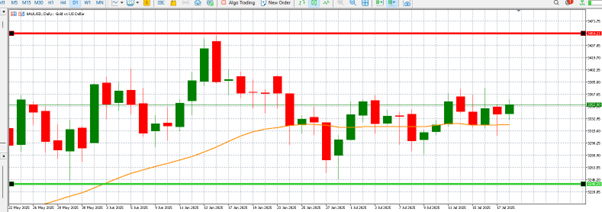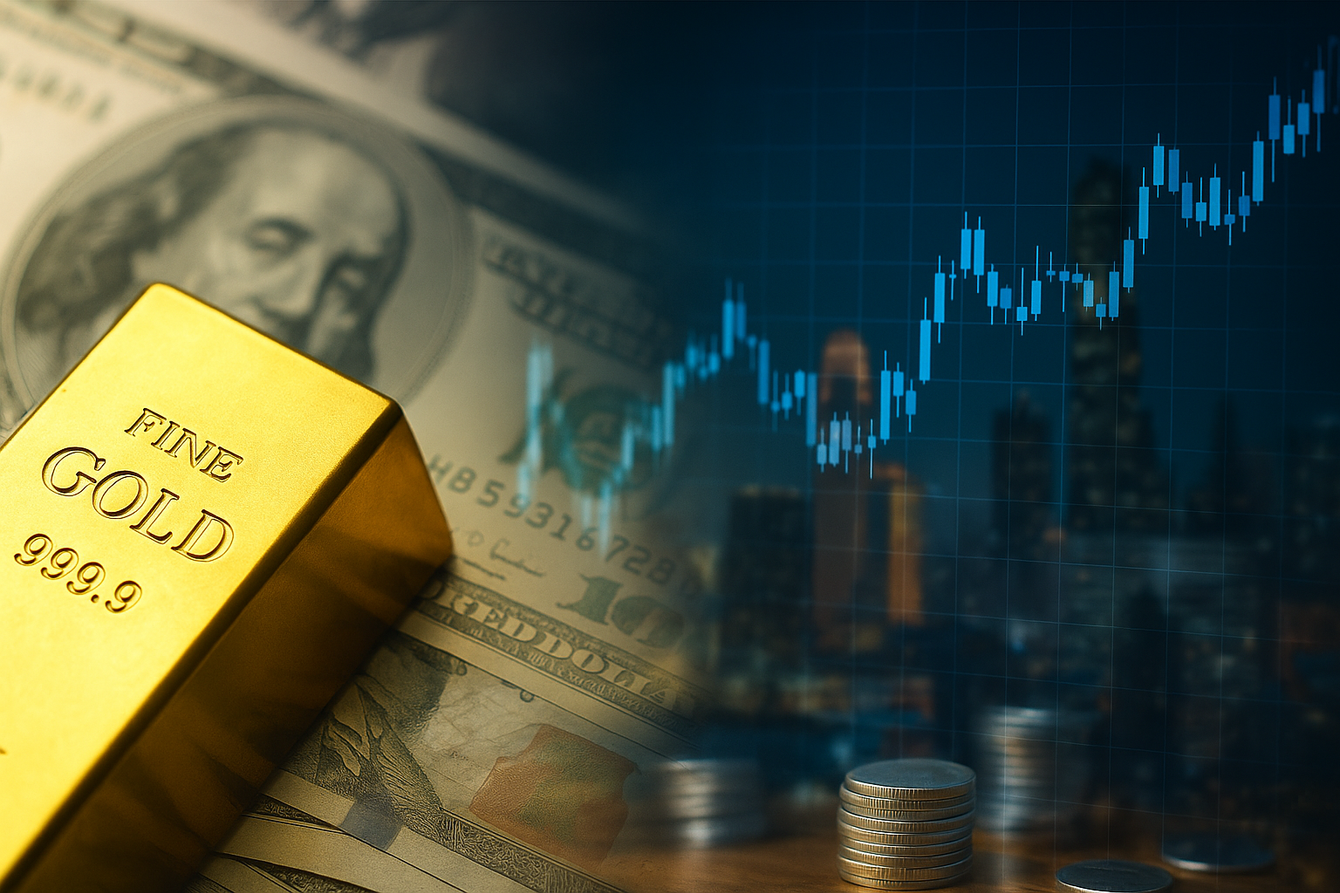(Kitco Commentary) - Gold prices have remained annoyingly rangebound for weeks, not managing to break out to all-time highs even as various macroeconomic and geopolitical events have come and gone. Having initially broken to the upside, gold has increasingly become locked within narrow price ranges, and there is little that makes one think there is going to arrive one day an enormous breakout. Having long been promoted as an inflation and economic risk hedge, the metal is now confronted by headwinds that are generating too little momentum.
Gold prices steady these days around $3,240 to $3,446 an ounce, an echo of general market indecision. After highs reached earlier this year, the price has never held steady but seesaws back and forth around that narrow band. This consolidating market for gold has investors speculating: What would release that price out of its consolidating mode? Let us look back at what has moved the price of gold and what is down the road that could cause that price to spike up or have it remain steady.

Gold tradingchart by AvaTrade
Strengthening of US Dollar: Key Factor that is Holding Back Gold
Gold's first and foremost deciding variable, which would dictate its short term response, is the dollar's strength. Gold and the dollar are inversely correlated, which means, if the dollar is strong, gold is weak, and, if gold is strong, the dollar is weak. Today, the dollar is still strong, driven by monetary policy of the interest rate as set by the Federal Reserve as well as the health of the United States economy.
For the prices of bulion to strongly strengthen, there would need to be dollar weakness, something that could very easily take place if the Federal Reserve does reduce interest rates. This, however, is something that would seem most improbable for the short term. There has been decreed that the Fed is staunchly data driven, and as there is very good US economic performance — most exceptionally within the labor market as well as consumer spending — there has been very little that would suggest that the Federal Reserve would attempt to take drastic measures toward reducing interest rates. Indeed, there has been fear that an interest rate reduction could cause an inflationary pressure that could cause even more volatility throughout the market.
Therefore, as long as the Federal Reserve does not take steps to begin unwinding its policy and reduce the rate, the US dollar would prefer grinding its way higher. This would also prevent building good momentum for gold as, as a general policy, an appreciating dollar suppresses buying optimism for the yellow metal. Investors would prefer the relative security and return of the US dollar as against the non-yielding gold.
Economic Data: Another Crucial Factor that is Keeping Gold Back
Major weakness of economics statistics would also attract gold into higher ground. In the scenario that readings of economics such as GDP growth, jobs, or consumer spending would indicate that they are tapering off, the Federal Reserve would likely need to change its present course of monetary easing. Slow economic figures would have the tendency to raise concerns that there would soon be an approaching recession ahead, which would precipitate more procurement of gold as a perceived haven.
But economics of the day does not permit that. Latest numbers, including retail sales and non-farm payrolls, have done better than expectations, and that is proof of the fact that the US economy is still going great. The labor market is still creating jobs, and consumer spending is not declining as steeply as would have been assumed. Such encouraging economic numbers indicate that far from sliding into recession, the US is still miles away, and that would reduce pressure on the Fed to reduce interest rates anytime soon.
Loosely, nothing is actually amiss within the economics numbers as of the present time, and for that matter, the breakout higher for gold conditions do not exist. Without an emergence of economic pain or policy change for the Fed, sustained resistance is confronted by gold.
Wildcard: How Trump Is Remaking the Federal Reserve Here, however, is the only wildcard: the possibility that President Donald Trump could succeed in removing Federal Reserve Chairman Jerome Powell. This is doubtful, but the President has been outspoken against Powell as well as Federal Reserve interest rate monetary policy for quite some time. To the degree that Trump can have his own personally-selected nominee for Federal Reserve Chairman who is more accommodative of his own interests for interest rate policy — and indeed, hungrier for those interest rates to decline as an economic stimulant — the US dollar and gold could take radically divergent paths.
Leadership shift for the Federal Reserve might allow for a more dovish monetary policy, which would help bulls for gold because the dollar would go down and prices of metal would rise. This is, however, not guaranteed. Even if potentially Trump might fire Powell, general world forces of mandate of the Federal Reserve and monetary architecture of the world might restrict drastic policy changes. There is, however, the chance of such drastic change, and speculators for gold would have to pray for anything for leadership of the Federal Reserve, because that might give us the push for drastic change for prices of gold.
Conclusion: Patience is Foothold for Speculators of Gold
Gold bulls must remain patient as they await that spark for the breakout to the upside. Without an unexpected event within the United States economic environment or an about-face of Federal Reserve policy, the likely scenario is that gold is stuck within its present range. Possibly the most probable scenario is that the United States dollar grinds its way back up, sending the price of gold down. Only an event, an institutional change either on the leadership or policy face of the Federal Reserve, would most likely alter the equation for the dollar as well as for gold. For the time being, however, the future for gold would appear to entail the metal contending against the stronger dollar as well as the stronger United States economy, thereby an upside breakout as an unlikely scenario.
